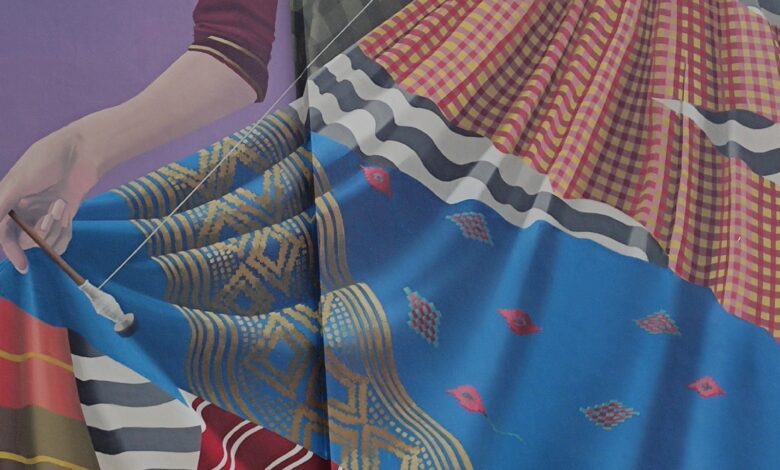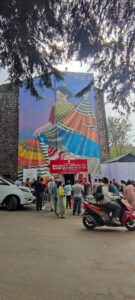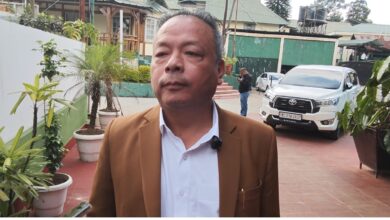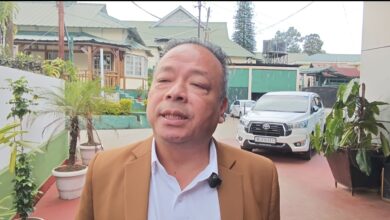Paul opens textile painting on wall of sericulture & weaving dept

Shillong, Sept 9: Minister of Textiles Paul Lyngdoh has unveiled a painting on the wall of the Directorate of Sericulture and Weaving office in Lachaumiere, part of ‘Donate A Wall’ project.
The initiative is supported by St+art India, Asian Paints, and the Textiles department to promote arts and culture.
The mural created by Siddharth Gohil (Khatra) depicts a woman weaving a traditional dress, celebrating Meghalaya’s cultural heritage through patterns and techniques.
Lyngdoh pointed out the project’s importance in showcasing the state’s unique identity and the people’s role in shaping its destiny. He expressed gratitude to all those involved in creating the beautiful painting.
Principal Secretary of Arts and Culture, Frederick Kharkongor and representative of St+art India Vikash Nagrare spoke on the occasion regarding the project which is linked to the culture and the tradition of the state.
Siddharth Gohil said on phone that he took two months to complete the painting.
“initially, two persons were there to help me but they left mid way and later two others joined”, Siddharth said.
According to the artist, many elements of the local culture and tradition were incorporated in the painting.
Threads of Tradition
Titled “Threads of Tradition,” , the artwork is part of the Donate A Wall (DAW) initiative. The mural is a tribute to Meghalaya’s rich textile heritage, weaving together the intricate patterns and traditional techniques that serve as tangible manifestations of the region’s culture and history. The work shows a local artisan immersed in the art of weaving, surrounded by traditional motifs that encapsu- lates the essence of Meghalaya’s diverse communities. Each pattern-Jainthohbah, Thoh Saru stripes, Khneng embroidery, Jainkyrshah, and Garo-carries profound cultural significance, embodying the collective memory and identity of the people, says the inaugural plaque.
Jainthohbah, characterised by its large chequered designs, is often seen on shawis worn by Khasi women. This pattern, traditionally woven with Eri silk, symbolises the adaptation and continuity of artistic expression in the community. Thoh Saru stripes, seen in the lower garments of the Jaintia women, are known for their elegant simplicity and are typically made of Eri silk, reflecting the grace and tradition of Jaintia culture.
Khneng embroidery is a unique and nearly lost art form originating from Mustoh village near the Bangladesh border. This intricate embroidery, inspired by the centipede (ktiar), is traditionally stitched on the borders of Eri silk garments. Jainkyrshah patterns highlight the meticulous craftsmanship of Meghalaya’s weavers, often incorporating geometric shapes and linear designs drawn from nature and local folklore. Garo motifs, such as the muikron diamond pattern), are inspired by the local environment and stories, symbolising auspiciousness and community identity.
The mural was created to celebrate these connections and honour the artisans who keep these traditions alive. By integrating these patterns into a large-scale public artwork, “Threads of Tradition” serves as a visual narrative of heritage and identity. It underscores the importance of preserving these practices, as they are vital to the cultural memory and continuity of the community. These textiles are not merely fabric; they are woven stories that preserve the values, beliefs, and identities of the people, said the inaugural plaque.





